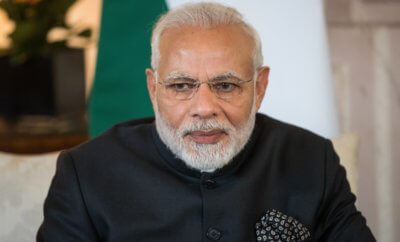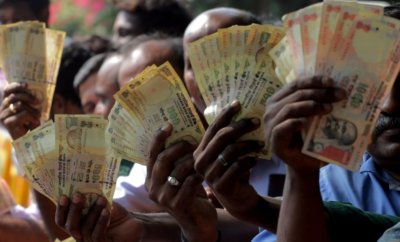Business
India Will Be Fastest Growing Economy at 7.4% in 2018, Says IMF

International Monetary Fund
Photo: Bigstock
India is recovering from the effects of demonetization and the introduction of the Goods and Services Tax, the IMF report said.
India is set to be the fastest growing economy in 2018 with a growth rate of 7.4 per cent, the International Monetary Fund said on May 9. The growth rate will go up to 7.8 per cent in 2019, with the country’s medium term prospects looking positive, it added, IANS reported.
India has been recovering from the effects of demonetization and the introduction of the Goods and Services Tax (GST), and “the recovery is expected to be underpinned by a rebound from transitory shocks as well as robust private consumption,” according to IMF’s Asia and Pacific Regional Economic Outlook report.
Medium term consumer price index inflation “is forecast to remain within but closer to the upper bound of the Reserve Bank of India’s inflation-targeting band of four per cent with a plus or minus two per cent change,” the report said. “In India, given increased inflation pressure, monetary policy should maintain a tightening bias,” it added.
The consumer price increase was 3.6 per cent last year, IMF said, predicting it to increase to five per cent in 2018 and 2019. While the current account deficit in fiscal year 2017-18 is expected to widen somewhat, the report said it should remain modest by being financed by robust foreign direct investment inflows.
As per the report, Bangladesh is the second fastest growing economy in South Asia, with a growth rates of 7 per cent projected for 2018 and 2019. Sri Lanka is expected to grow at 4 per cent in 2018 and 4.5 per cent in 2019, while Nepal will grow at 5 per cent this year and 4 per cent in 2019.
Asia remains the fastest growing region in the world and is driving global economy by contributing to 60 per cent of the global growth, the report said. Three quarters of this comes from India and China. China is expected to grow at 6.6 per cent this year and 6.4 per cent in 2019, it added.
U.S President Donald Trump’s fiscal stimulus is expected to support Asia’s exports and investment, and the region’s growth rate is projected to be 5.6 per cent for 2018 and 2019.
For the medium term, the report observed that “downside risks dominate” for Asia. These downside risks include a tightening of global financial conditions, a shift toward protectionist policies, and an increase in geopolitical tensions.
The IMF has recommended that Asia follow conservative policies “aimed at building buffers and increasing resilience” and urged the countries to push ahead with structural reforms.
Saying that Asia should take steps to ensure that it is able to reap the full benefits of increasing digitization in the global economy, the IMF noted: “While mobile payments are expanding sharply in such economies as Bangladesh, India, and the Philippines, on average Asia is lagging sub-Saharan Africa.”




You must be logged in to post a comment Login